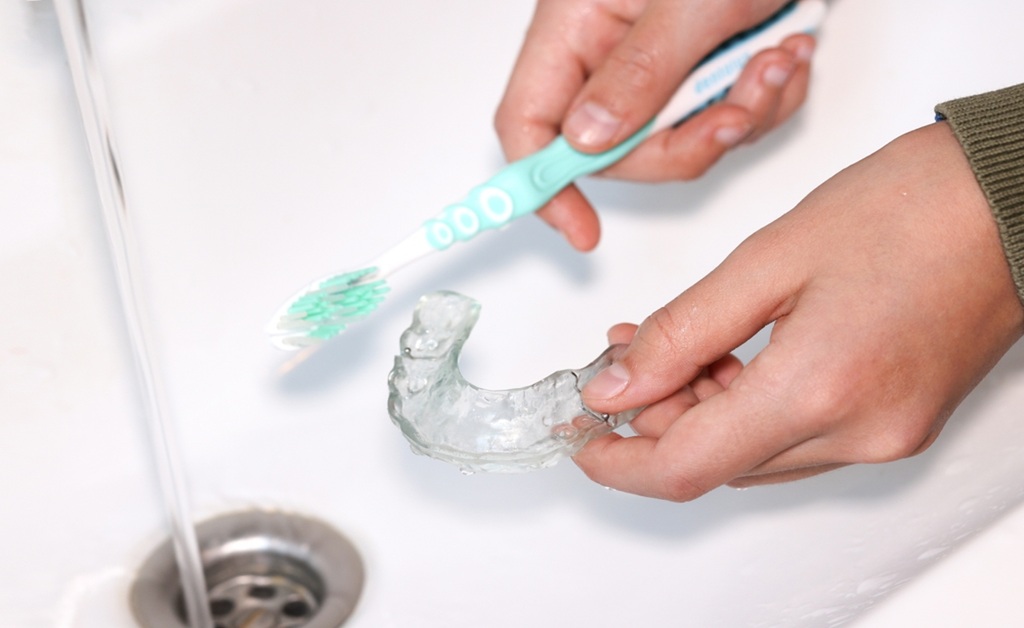You’ve just completed orthodontics and your beautiful new radiant smile is revealed. But no less important as acquiring it is maintaining it: keeping your plastic dental retainers healthy and clean. Too many patients underestimate how much it matters to keep those retainers clean, but this simple daily routine makes all the difference between a healthy mouth now and costly dental problems down the road. When in doubt, consult a Reflections Dental Care dentist in OKC for personalized retainer care advice.
Retainer cleaning is in no way affiliated with costly products or high-tech techniques. Your retainers can be maintained in a fresh, clean, and advanced condition all from your own home if you’re well-informed and have daily routines. If you’ve ever wondered how to clean plastic dental retainers effectively, you’ll find simple answers here.
Why Everyone Should Clean Retainers
Your mouth is a natural breeding ground for bacteria, and retainers are an ideal setting that allows such microorganisms to reproduce. As you put on your retainer every day, it accumulates saliva, food deposits, and plaque. Without proper cleaning, this deposit presents an ideal breeding ground for pathogenic bacteria.
Sanitized retainers also remain transparent and comfortable. A well-maintained retainer is barely noticeable and fits well to keep your teeth firmly in their corrected positions. Proper cleaning prevents the plastic from getting hazy or having a foul smell that may lower your confidence during the day. Consider using a quality dental retainer cleaner to maintain both hygiene and appearance.
What Will Happen When You Don’t Clean Them?
Failure to practice good retainer hygiene will have severe oral health consequences. Bacterial accumulation will make you more susceptible to tooth decay, gum disorders, and recurring foul breath. Such accumulated plaque can also lead to white patches on your mouth, which might have to be treated professionally to eliminate.
Dirty retainers tend to develop a heavy, gummy coating that is uncomfortable to wear. This could cause you to want to leave your retainer off entirely, which will allow your teeth to move backward to a less desirable location. Neglected retainers may also develop irreversible stains and odors that make wearing them embarrassing in social situations. Fortunately, if you keep a clean plastic retainer using the right tools, you can avoid most issues.
Simple Ways to Clean Retainers
The best cleaning approach is to use soft, daily household objects. Clean your retainer under warm tap water as soon as you take it out of your mouth. This easy step loosens up free debris and stops saliva from drying and adhering to the surface.
Create a cleaning solution by placing equal parts of cold water and white vinegar in a bowl and soak your retainer in it for 15 to 20 minutes. Natural acidity in vinegar dissolves deposits of minerals and kills germs without affecting plastic content. Gently scrub the retainer afterward with a soft-bristled toothbrush and wash it off in cold running water.
For regular cleaning, soft dish soap is perfect. Use a small amount and a soft-bristled toothbrush to scrub all areas of the retainer lightly. Make sure to focus extra attention on crevices and groves where bacteria tend to congregate. Rinse well to wash all of the soap away before placing your retainer back in your mouth.
Baking soda is yet another safe cleaning option. You can create a homemade cleaning solution through mixing a teaspoon of baking soda in a bowl of water. This is a safe cleaning solution that will eliminate odors as well as destroy acids without spoiling plastic material. Regardless of the approach, the orthodontists at Reflections Dental Care and beyond agree that the best dental retainer cleaner is simple, safe, and used consistently.
Listen to the Advice of Professionals
Oral professionals do not recommend harsh chemicals or scalding high temperatures when cleaning retainers. Do not use hot water, bleach, or alcohol-based mouthwashes that will warp or ruin the plastic material. Do not use abrasive toothpaste containing bleach, whiteners, baking soda in heavy levels.
Keep your retainer in its case when it is not in use. This avoids getting it contaminated by bacteria and protects it from getting broken. Change your retainer case every few months to maintain optimal standards of hygiene.
Securing Your Smile Investment
Proper retainer care is a small daily investment that saves years of orthodontic work. By adding these easy cleaning methods to your daily routine, you’re saving yourself both oral health problems and a costly investment in your beautiful smile. Keep in mind that regularity is far more important than absolute perfection – forming regular cleaning routines will be a good habit to have during your years of wearing a retainer!


